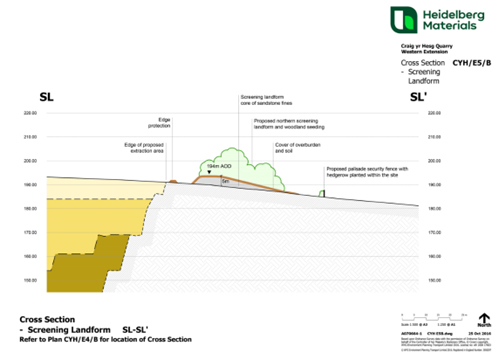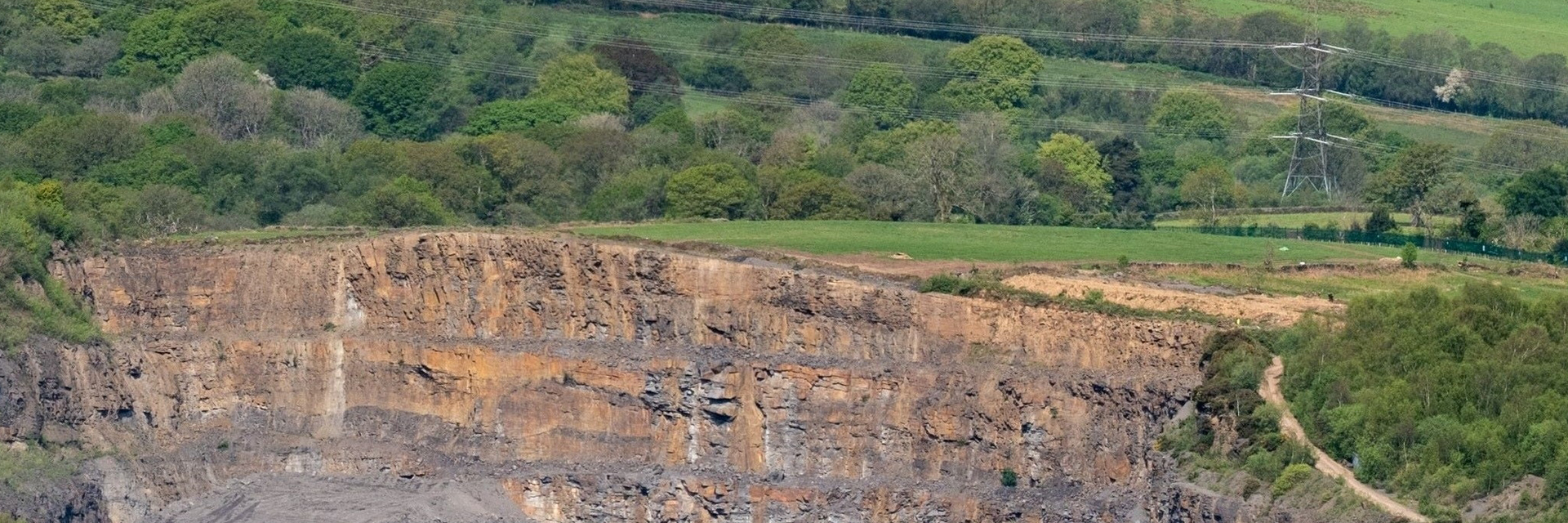Quarry extension groundworks - update
Date: 29 August 2024
Overview
We will be carrying out further groundwork as part of the approved extension to Craig-yr-Hesg quarry. This work will see heavy machinery and specialist contractors on site and once completed, will see two new bunds (land banks created from soil and overburden) in place to screen quarry operations and limit noise and dust.
All work is being carried out by specialists under permissions granted by Rhondda Cynon Taf County Borough Council (RCT) and there is extensive environmental and archaeological oversight in place.
The groundwork will take around eight weeks and represents an important milestone in ensuring that all mitigation measures are in place to limit the impact of the quarry extension on our near neighbours.
Site preparation and ecological considerations
Our approved plans for the extension of Craig-yr-Hesg quarry include carrying out earthworks to prepare the land for mineral extraction, plus the creation of screening bunds in two locations around the perimeter of the site. In addition, more than 3,000 trees will also be planted on the main bund to the north of the site as well as adjacent hedgerow planting. These steps will improve the views into the site as well as providing mitigation once extraction gets underway.
This work involves the removal of soils and overburden from specific areas within the site boundary (see map below) as well as the development of haul roads for use by dumper trucks during the construction of the bunds.
All material removed will be kept for use in creating the 3-5-metre-high screening bunds or stored on site for use in current or future restoration. Bluebell bulbs will be collected where possible for replanting elsewhere and the soil seed bank will remain intact. Stone from dry-stone walls removed will also be retained for future use on site in the construction of a reptile refuge, repairs of other onsite dry-stone walls being retained or within community projects.
The work is being carried out in line with the Species Protection and Habitat Management Plan and Tree and Woodland Management Plan that have already been approved by RCT. Specialist ecologists will be on site throughout and you may already have seen them working on some initial vegetation clearance. They will also be carrying out the dismantling of the dry-stone walls in the weeks ahead. Once the soil stripping gets underway, they will be carrying out a watching brief as required to ensure the protection of wildlife, with the work timed specifically to minimise impact on wildlife. Expert archaeologists will also be on hand to monitor the soil removal work.
Quarry boundary
As the map below shows, the palisade fence sits within the approved extraction site boundary and well within our land boundary. There will be occasions when machinery, including dumper trucks, and contractors will be working outside of the palisade fence, particularly on the west of the site, as they carry out their work. It is important to stress that they will still be both within our approved extension area and on our land. To ensure the safety of all and to limit the visual disturbance on the local community, some temporary heras fencing with screens will be erected where our site abuts the Darren Dhu Road.
The map shows the area of initial groundworks, including the two bunds to be created on the site boundary:

This cross-section image of a screening bund shows how they are designed to improve and/or protect views into the site as well as providing a barrier for dust and noise. When planted they will reflect the area’s landscape and help boost biodiversity.

